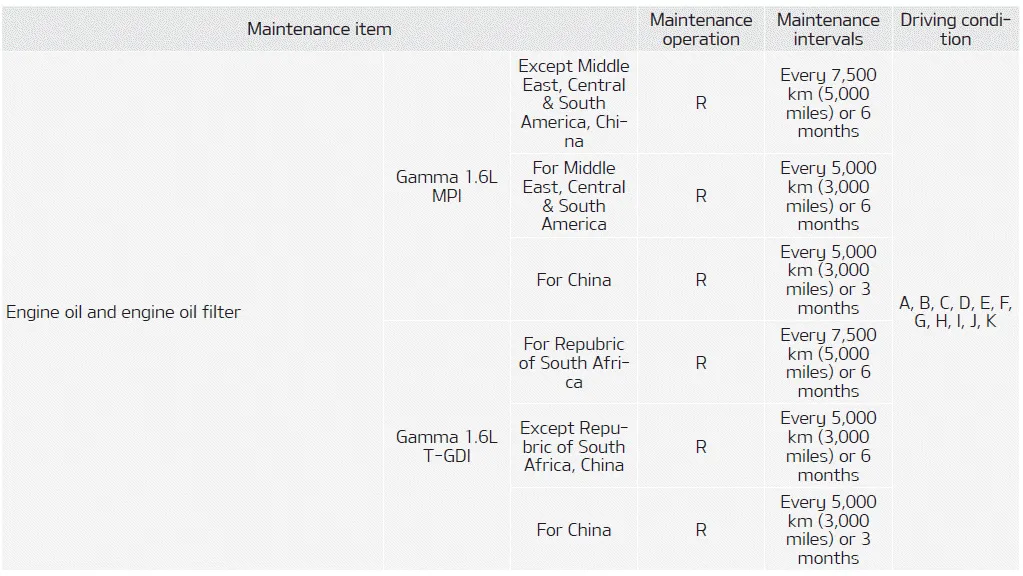Kia Soul (SK3): Scheduled maintenance service / Maintenance Under Severe Usage Conditions - For Gasoline Engine




Maintenance operation
I: Inspect and if necessary, adjust, correct, clean or replace.
R: Replace or change.
SEVERE DRIVING CONDITIONS
A: Repeatedly driving short distance of less than 8 km (5 miles) in normal temperature
or less than 16 km (10 miles) in freezing temperature.
B: Extensive engine idling or low speed driving for long distances.
C: Driving on rough, dusty, muddy, unpaved, graveled or salt-spread roads.
D: Driving in areas using salt or other corrosive materials or in very cold weather.
E: Driving in heavy dust condition.
F: Driving in heavy traffic area.
G: Driving on uphill, downhill, or mountain roads repeatedly.
H: Towing a trailer or using a camper on roof rack.
I: Driving for patrol car, taxi, other commercial use of vehicle towing.
J: Driving over 170 km/h (106 mile/h).
K: Frequently driving in stop-and-go conditions.
The following maintenance services must be performed to ensure good emission control and performance. Keep receipts for all vehicle emission services to protect your warranty.
Engine oil and filter The engine oil and filter should be changed at the intervals specified in the maintenance schedule. If the car is being driven in severe conditions, more frequent oil and filter changes are required.
Other information:
Kia Soul (SK3) 2020-2025 Owners Manual: Battery recharging
Your vehicle has a maintenance-free, calcium-based battery. If the battery becomes discharged in a short time (because, for example, the headlights or interior lights were left on while the vehicle was not in use), recharge it by slow charging (trickle) for 10 hours.
Kia Soul (SK3) 2020-2025 Owners Manual: Checking tire inflation pressure
Check your tires once a month or more. Also, check the tire pressure of the spare tire. How to check Use a good quality gauge to check tire pressure. You can not tell if your tires are properly inflated simply by looking at them. Radial tires may look properly inflated even when they're underinflated.
Categories
- Manuals Home
- Kia Soul Owners Manual
- Front seat adjustment - power
- Power outlet
- Seat
- New on site
- Most important about car
